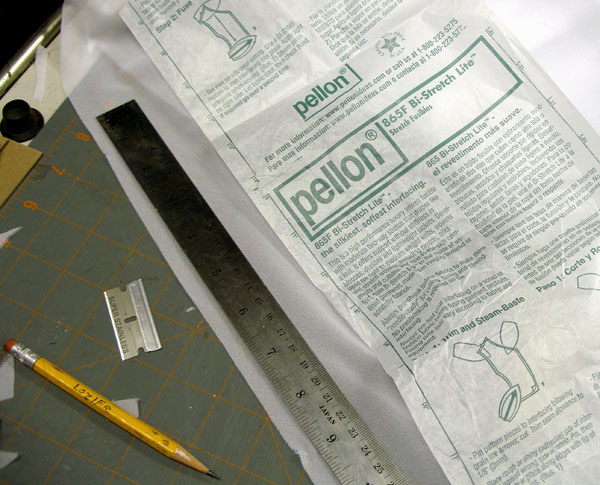
With the tears on the cone taped in position and glued on the front side, you can now proceed to rework the torn corrugations at the flange of the cone.
Before you start, verify with a level that the voice coil former and your doughnut base are absolutely parallel. The piece of MDF insures enough weight to provide uniform pressure on the cone.
Now you can wet the corrugations and start using your tweezers to move torn bits back into proper alignment.

With the Scotch tape holding the tears together on the back side, you can patch the front side of the tear. In the past, I would say that the best way to do this is to use coffee filter paper and slightly diluted wood glue to bridge the tears. BUT there is a much better way I just discovered.

There is a dressmaker material called "interface lining". There is a very sheer version of the material made by pellon "865F Bi-Stretch Lite" (I bought it at Wal-Mart.)
You cut strips with a very sharp razor blade and steel rule guide on the bias (45 degrees to the weave).
Simply dredge the strip through a puddle of full strength Tite-Bond II Extend wood glue. This glue gives you plenty of time to position the cloth and brush out bubbles and excess glue.
This veneer glue is definitely the way to go, trying to dilute regular wood glue consistently is really difficult.
You can see on the next page that the bias cut fabric conforms to the tear and corrugations. I can tell you that it works beautifully. And you should know that this will produce a much finer repair than using used dryer sheets or other porus materials.